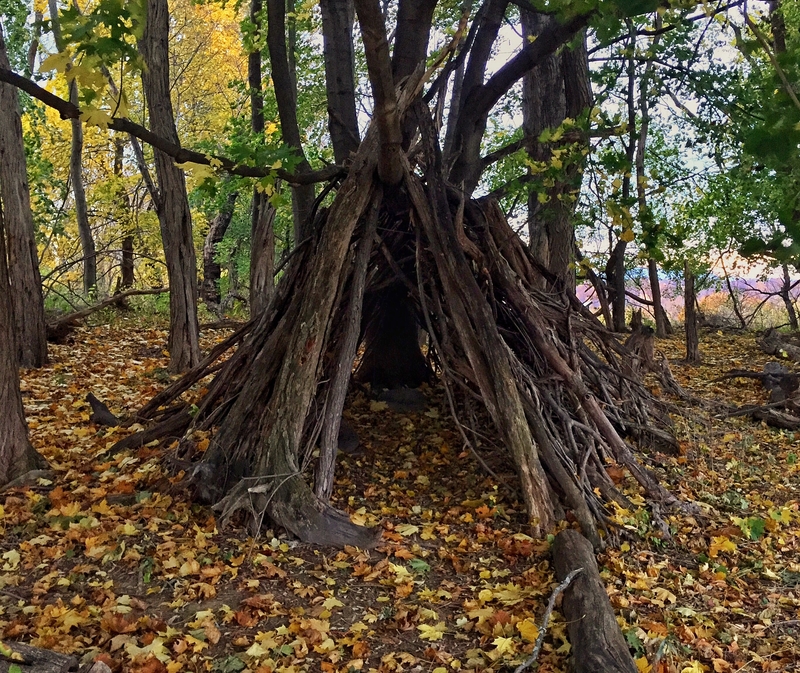Here are three improvised shelters you can erect fairly quickly and easily, even in dire situation. We recommend learning to make these before you ever set foot in the wild!
Lean-To
A lean-to shelter is going to be perhaps the easiest one to set up of the bunch – which means that it’s going to take you less time to get the job done before the setting sun causes you problems. If you weren’t able to bring along a headlamp, then this particular shelter is a good choice.
Essentially, a lean-to shelter is a simple structure . With practice, it can be erected quickly and offer you a heat reflector to get the most out of your fire. It also can block out a moderate rain (if the shelter is set up to shield you from the wind).
You can find a stellar tutorial on how it’s done from PracticalSurvival.com, although the picture on this page will give you a sense of what you need.
Pros: Quick setup, requires less tooling, offers some cover and can be used as a heat reflector to contain heat from your campfire (which can be amplified with a space blanket).
Cons: Won’t protect against very rainy or cold weather, waterproofing on only one side, will not efficiently trap body heat.
A-Frame
The a-frame shelter is often the go-to for bushcrafters in the northeastern woodlands of the U.S. simply because it does just about everything a shelter should do, reasonably well. It’s also based on a simple ribbed design, so it makes for a somewhat fast setup. Yet at the same time you can add as much debris as you feel necessary for weatherproofing and heat retention.
The key here is to make sure you’ve set aside enough time to plan it out since it’s going to be a bit more complex to build than your common lean-to shelter system. The nice part about this shelter is that you can build a fire near the entrance and if you have a backstop to your firelay you can reflect that warmth inside your a-frame.
MakerMAF on Instructables has a great tutorial piece on building a-frame shelters.
Pros: Moderately easy setup, moderately sturdy against wind, protects on two sides and will offer moderate heat retention.
Cons: Will be inadequate in extreme weather conditions, takes double the set-up time as a lean-to and construction integrity depends on resources at hand.
Wickiup
The wickiup (could also be categorically called a wigwam) is basically the granddaddy of survival shelters and is the prelude to the teepee. This shelter system can provide a more permanent residence due to its sturdy construction, heat retention, indoor heat option and overall comfort-factor. Needless to say, there are no shortage of advantages to a conically shaped shelter.
This shelter does takes coordination, time and skill to set it up in such a way that justifies building it.
Have you ever made any of these shelters? Which one would you recommend to someone caught out in the wild and in need of shelter? Share your thoughts in the comment section below!
Article Source: Off the Grid News

stick tp’s and lean-to’s are simple, somewhat effective and eaisly disposed of without leaving a trace. eco-efficient. I been makin’dim thangs since ah wuz six year old.
Look familiar Stephanie Kummer & Tony Hall
Kids made these on the land.